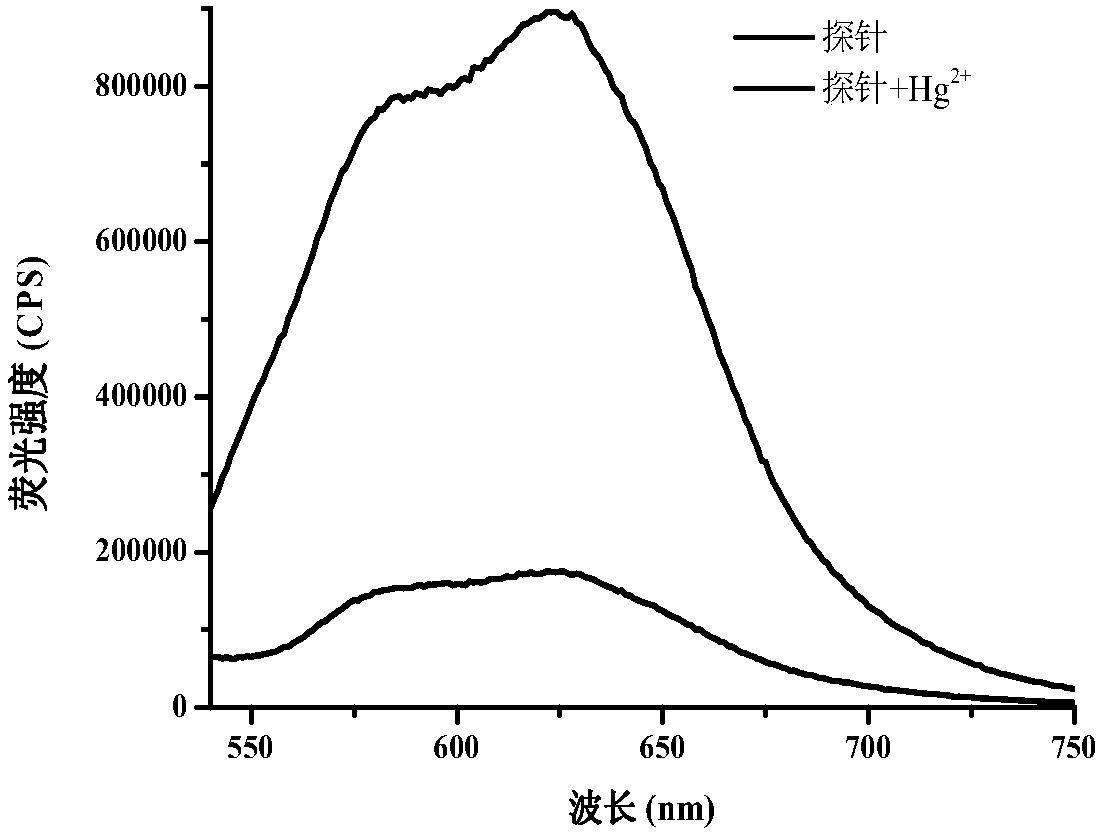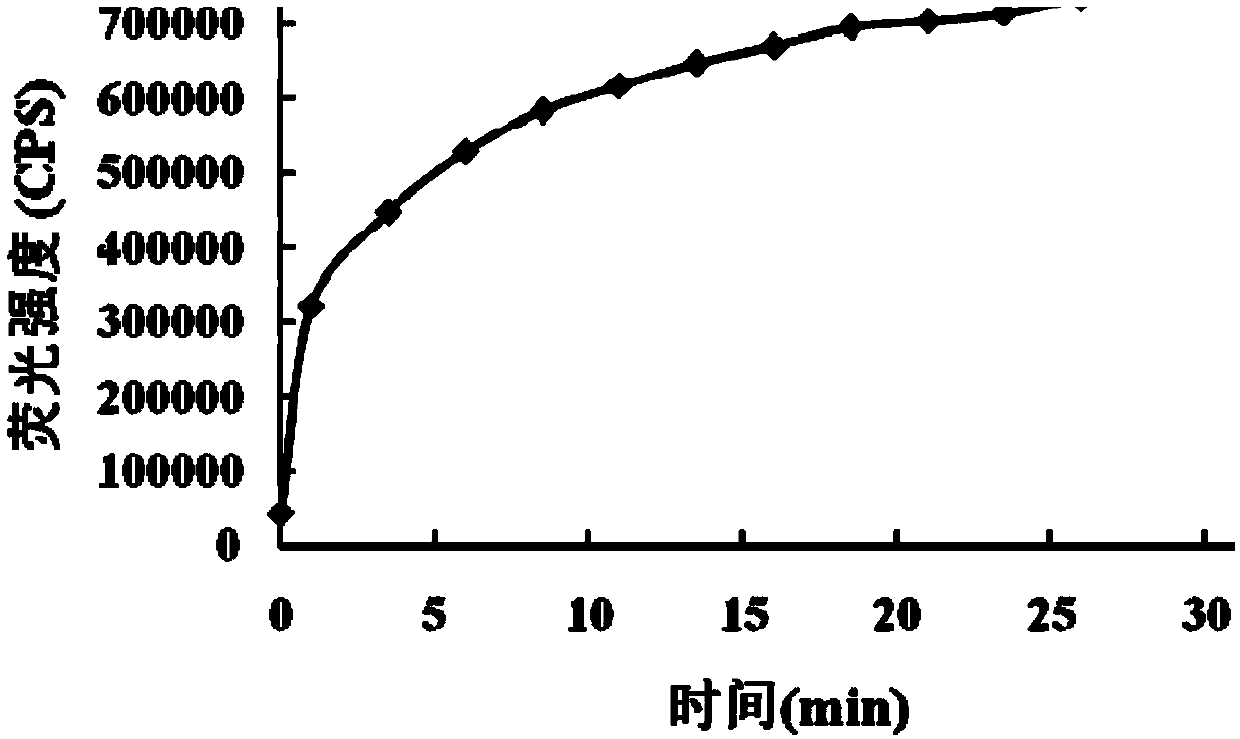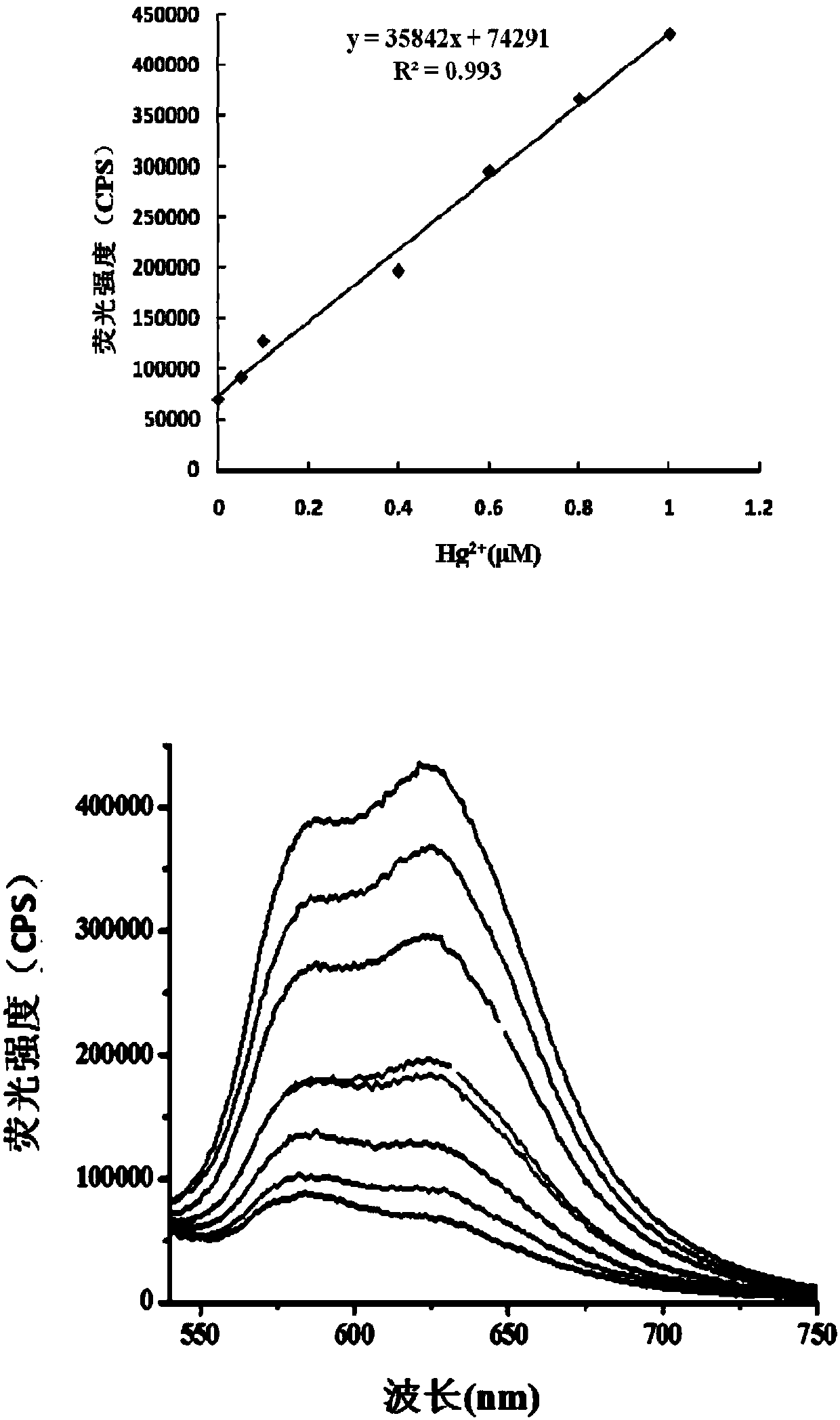Fluorescent probe for recognition of mercury ions based on high selectivity of thiocarbonate
A technology selected from the carboxyl group, applied in the direction of fluorescence/phosphorescence, luminescent materials, material analysis by optical means, etc., can solve the problems of poor pH stability, complex synthesis, poor selectivity, etc., and achieve the effect of good stability and simple synthesis
- Summary
- Abstract
- Description
- Claims
- Application Information
AI Technical Summary
Problems solved by technology
Method used
Image
Examples
Embodiment 1
[0035]
[0036] (Scheme 1) 438.5 mg (1.0 mmol) of rhodamines (such as the synthesis product of 1,6-dihydroxynaphthalene and 4-diethylaminoketo acid), 172.6 mg (1.0 mmol) of phenyl thiochloroformate and (350 μL) N,N-diisopropylethylamine (DIPEA) was dissolved in 15 mL of dichloromethane, then stirred at room temperature for 12 h, and then rotary-evaporated to obtain the crude product, and finally a dichloromethane:methanol system (30:1, v / v) Carry out column chromatography to obtain 365mg, 63% of pure product.
[0037] (Scheme 2) 438.5 mg (1.0 mmol) of rhodamines (such as the synthesis product of 1,6-dihydroxynaphthalene and 4-diethylaminoketo acid), 258.9 mg (1.5 mmol) of phenyl thiochloroformate and (350 μL) N,N-diisopropylethylamine (DIPEA) was dissolved in 15 mL of dichloromethane, then stirred at room temperature for 12 h, and then rotary-evaporated to obtain the crude product, and finally a dichloromethane:methanol system (30:1, v / v) Column chromatography was carrie...
Embodiment 2
[0042] The inventors of the present invention conducted the following tests: Hg 2+ (20 μM) on the fluorescence spectrum of the probe (5 μM). The above assays were performed in 5 mM HEPES, pH 7.4 in water, the probes used were those prepared in Example 1, and all spectroscopic measurements were at 25°C with Hg 2+ Measured after adding the action for 30min. See the results figure 1 .
[0043] from figure 1 It can be seen that Hg 2+ The fluorescence intensity is greatly enhanced.
Embodiment 3
[0045] Probe (5μM) to Hg 2+ (20 μM) test results of response time. The above assays were performed in 5 mM HEPES, pH 7.4 in water, the probes used were those prepared in Example 1, and all spectroscopic measurements were performed at 25°C. See the results figure 2 .
[0046] from figure 2 It can be seen that with the increase of time, the fluorescence intensity gradually increased and maintained a maximum value after 30 minutes.
PUM
 Login to View More
Login to View More Abstract
Description
Claims
Application Information
 Login to View More
Login to View More - R&D Engineer
- R&D Manager
- IP Professional
- Industry Leading Data Capabilities
- Powerful AI technology
- Patent DNA Extraction
Browse by: Latest US Patents, China's latest patents, Technical Efficacy Thesaurus, Application Domain, Technology Topic, Popular Technical Reports.
© 2024 PatSnap. All rights reserved.Legal|Privacy policy|Modern Slavery Act Transparency Statement|Sitemap|About US| Contact US: help@patsnap.com










